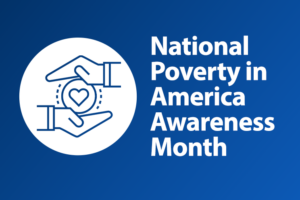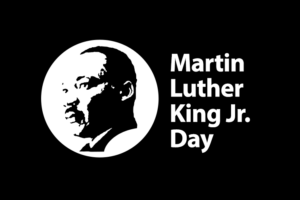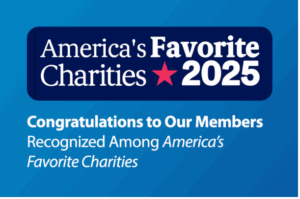Sarah Ford | September 29, 2016
Does Size Really Matter to Make an Impactful Employee Giving Program?
Get started today with America’s Charities portfolio of employee giving and CSR solutions.
You do not have to be a Fortune 500 company to create an impactful employee-giving program – however – you must think and engage like one.
For example, when we examined a really well-known Fortune 500 company’s employee giving program, we found that employees donated “more than sixty-three million dollars” to the charity of their choice through that program, and according to the company’s CSR Report they claimed “an employee engagement vs. disengaged ratio of 5 to 1 compared to the national average of 1.5 to 1.”
Those are significant outcomes; outcomes which have stemmed from that Fortune 500 company’s decision to make employee engagement and giving such an important part of their culture. However, that company didn’t achieve these results overnight. They had to work their way up to this level of success by making a commitment, planning, doing and believing.
No Company is Too Small or Too Large to Offer Employees a Workplace-giving Program
While your company may or may not garner results quite as sizeable as that Fortune 500 company, you most certainly can achieve results just as comparable.
Keep in mind, that Fortune 500 company employs more than 270,000 people (less than 1% of employer firms have an employee base this size). When you consider how many employees that company has, along with the $63 million dollars they raised – that equates to an average donation of $233 per employee. That puts into perspective how realistic it actually is for your company to produce comparable results.
According to statistics of U.S. businesses, about 67% of the employed U.S. workforce works for companies with less than 5,000 employees. That’s a lot of employees who may or may not currently have the opportunity to participate in workplace giving because the company thinks it’s too small to make an impact. According to the Center on Philanthropy, only 36% of full-time employees surveyed said they’ve worked at a company that offered a workplace giving campaign, and when asked to participate, more than half of employees (54%) did, donating an average gift of $170 each.
Imagine the social impact these companies could have by offering employees a workplace-giving program. To start, set reasonable expectations based on your company’s size and employee interest. Let’s say you have 500 employees and expect that each of them will donate an average of $170 each, based on the survey mentioned above. Collectively, your company could raise as much as $85,000. If your 500 employees each donate $233 (an amount comparable to what that Fortune 500 company’s employees donated), then your company could raise as much as $116,500. That is a lot of money with the potential to make an incredible impact on the communities where your employees live and work, and that impact could almost double if your company offers to match employee contributions dollar-for-dollar or up to an established amount of money.
Alignment and Engagement
The key to achieving results comparable to that Fortune 500 company’s program is aligning your giving program with both your employees’ and company’s values. This means doing a few things:
- Offer your employees the choice to support charities they care about,
- Examine and decide what causes or specific charities with which to align your brand, and
- Offer a variety of ways and incentives for employees to donate to the charity(ies) of their choice.
Let’s go back to our example of the company with 500 employees who each donate $233. For the sake of this example, we’ll say company ”x” is located in Oklahoma, and after surveying employees and reflecting on its core values, the company decides to align its brand with helping children and families in need in Oklahoma. To successfully engage employees in giving and get them to support the company’s giving program, here are some tips and ideas I would suggest if that company were my client:
Obtain C-Suite “Buy-in”:
- It is very important to get buy-in and support for your program ranging from your company top executives to the CEO (and even board of directors). The success of a workplace giving program starts from the top down, not vice-versa. When employees know that the CEO and executives support the program, they more than likely will too.
Offer Charity Choice:
- Empower employees to support charities that interest them. In a survey of companies who switched away from the “traditional” United Way-only campaign to an expanded or open model with more charity choices, more than 79% of companies reported increased donor rates and 73% raised more money (LBG Research Institute, “Workplace Giving Works! Make it Work for You”).
Offer to Match Gifts:
- To encourage overall participation in the company’s giving program, offer to match a predetermined percentage or amount of each employees’ contribution. According to America’s Charities Snapshot report, corporate matches are becoming a central driving force that incentivizes employees to donate to charities through workplace giving – nearly two-thirds of employers surveyed indicate they match employee payroll contributions (a 58% increase since 2006).
- To get employees to support your company’s broader philanthropic goal, select a charity or small group of charities that support that goal and offer to match contributions dollar-for-dollar if employees support those specific charities.
Promote Your Program & Educate Your Employees About Benefits of Participating:
- You could have the most awesome giving program in the world, but if your employees don’t know about it or aren’t sure why they should participate, your program will likely fail. This can easily be handled with some flyers in the employee break room, emails from the company’s CEO or campaign coordinator, or even a small ad with information on the company’s employee portal.
- One of the major benefits of workplace giving programs (besides the fact that donations are tax deductible) is that employees can donate via payroll deduction. Unlike credit card donations, there are no extra fees added on or deducted from that employee’s donation. Plus, by allowing the employee to designate a small, predetermined amount of each paycheck to charity, payroll deduction makes it more feasible for the average person to donate a larger sum of money. Educate employees about the benefits of payroll deduction.
Encourage Employee Volunteerism:
Employees want to be engaged beyond giving money. They want to get involved first-hand, and for employees who can’t afford to donate money, volunteering might be a better way for them to participate in your company’s philanthropic efforts. Volunteers tend to donate 10 times more than other Americans. So even if they don’t donate now, they will likely donate later (and become a loyal donor at that). Volunteering comes in many forms too – it could involve pro bono work in which the employee can use their skills or it could even involve serving as a nonprofit board member (where that employee can improve their skills and build their professional network – both can be good for your company). If volunteering in your community is important to your company culture, offer paid time off for volunteering or a Dollars-for-Doers program that donates money to the charity that employees volunteer with.
Connect Employees with Impact:
- Fundraising, networking and other social events help catalyze greater giving. Holding these types of events allow employees to connect to a cause, hear success stories from charities and learn about the type of impact their donation can have.
- Employees expect to know what kind of results their volunteering and donations have. By partnering with a workplace giving partner like America’s Charities, your employees can choose to receive quarterly reports on how much of their money has been distributed to their designated charities, and if that employee gives permission for the charities they supported to acknowledge the employees’ donation – the charities can share the impact of that donation with the employee.
- Your company can also report results by sharing how much money your employees raised as a result of the workplace giving program. Depending on the workplace giving partner you choose, you can even gather detailed data on what charities employees supported and report back to employees numbers like how many different causes they supported.
- If your company promoted giving to a specific charity, aligned with the company’s goal of helping hungry children and families, tell employees the result of that initiative. For instance, one charity located in Oklahoma that helps hungry children and families is Feed The Children. $20 can help a reputable nonprofit like Feed The Children provide $100 worth of food and essentials to children in need (a figure they share publicly on their website). With that kind of information (and a little math), you can translate to your employees an estimate of how many children and families will receive food and essential items as a result of the company’s campaign.
The point is, you don’t have to be a Fortune 500 corporation to make an impressive and life-changing impact on those who utilize the services of charity organizations. When it comes to charitable giving and making an impact, size really doesn’t matter.
So the question remains, How will you rally to make employee engagement part of your company culture? How will you incorporate “individual group giving” into your employee engagement program? Start by taking a look at America’s Charities portfolio of solutions and contact us to get started now.
Get Resources and Insights Straight To Your Inbox
Explore More Articles
Congratulations to Our Members Recognized Among America’s Favorite Charities
Each year, The Chronicle of Philanthropy releases its list of America’s Favorite Charities—the 100 nonprofits that raise the most from individual donors, foundations, and corporate…
Read ArticleGet Resources and Insights Straight To Your Inbox
Receive our monthly/bi-monthly newsletter filled with information about causes, nonprofit impact, and topics important for corporate social responsibility and employee engagement professionals, including disaster response, workplace giving, matching gifts, employee assistance funds, volunteering, scholarship award program management, grantmaking, and other philanthropic initiatives.




